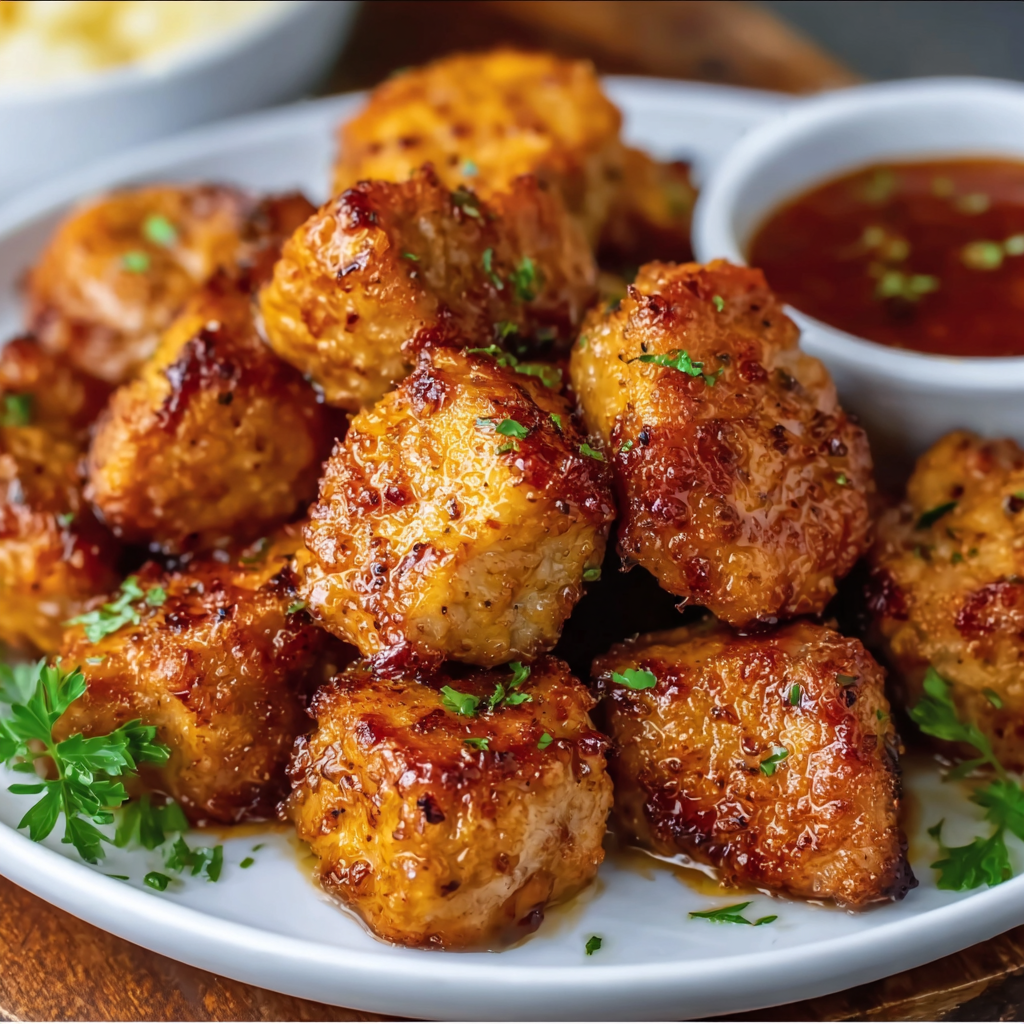Cast Iron Bavette Steak with Whiskey Garlic Cream Sauce

A restaurant-quality cast iron bavette steak finished with a silky whiskey garlic cream sauce — quick enough for weeknights, impressive enough for guests.
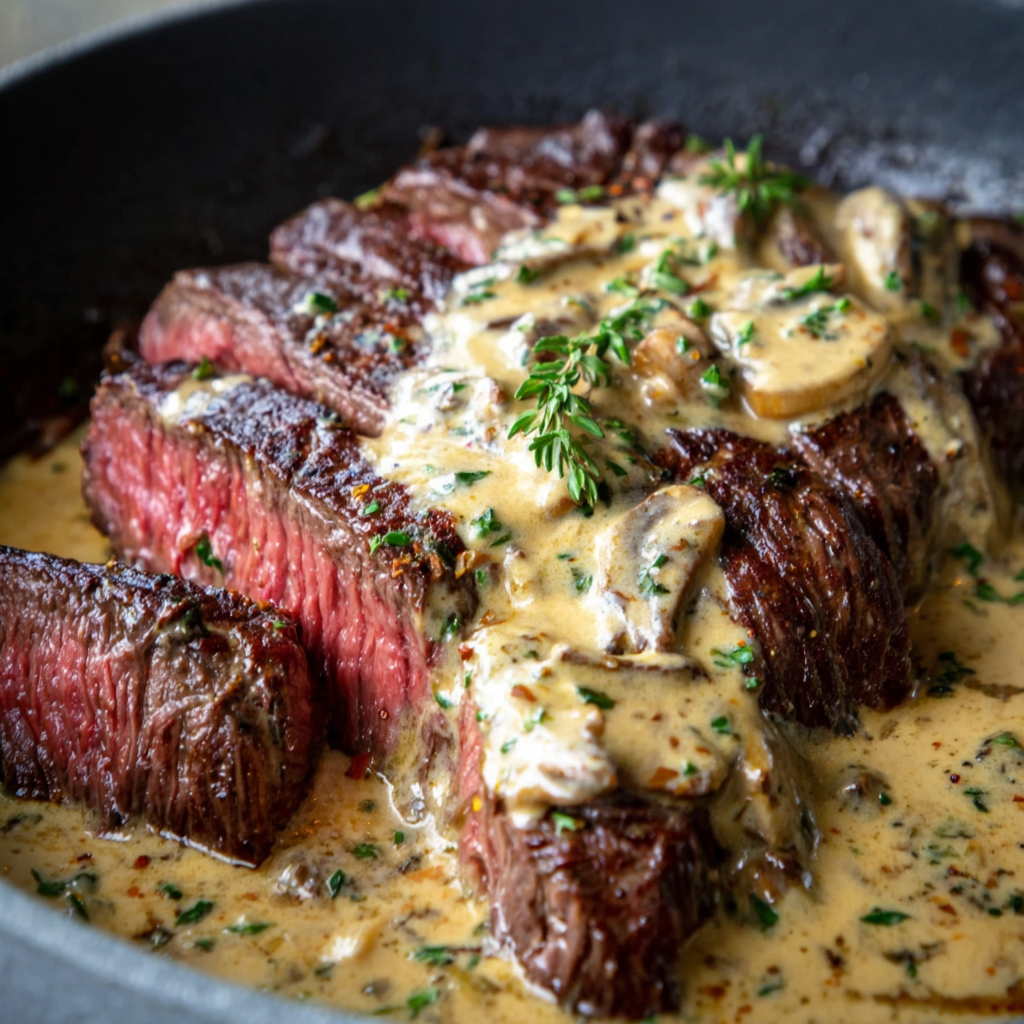
This cast iron bavette steak with whiskey garlic cream sauce is one of those dishes that elevates an ordinary evening into something memorable. I first fell for bavette — sometimes called flap steak — years ago at a small bistro where it arrived on a wooden board, perfectly browned and rested, tasting of beef and smoke. I recreated that memory in my own kitchen, pairing a quick, hot sear in a 12-inch cast iron skillet with a simple pan sauce built from the fond and a splash of whiskey. The result is tender meat with a deeply caramelized crust and a glossy, garlicky cream sauce that sings with thyme and Dijon.
I discovered this combination on a weeknight when I wanted something special without spending hours in the kitchen. Bavette is underappreciated because it’s affordable and forgiving; treated correctly it becomes as tender as a more expensive cut. This recipe is textured and balanced — the crust is crisp, the interior pink and juicy when cooked to medium-rare, and the sauce brings a buttery roundness and bright garlic-thyme notes. The family always asks for seconds, and it makes an easy date-night main when paired with roasted vegetables and buttery mashed potatoes.
Why You'll Love This Recipe
- Fast and impressive: Ready from start to table in about 30 minutes total — 10 minutes prep and 15–20 minutes cook time — perfect for a weekday dinner with restaurant flair.
- Affordable luxury: Bavette (flap steak) gives steakhouse texture and flavor at a fraction of the price of ribeye, and it benefits from a high-heat sear.
- Minimal pantry staples: Uses olive oil, butter, Dijon mustard, and common herbs — no specialty ingredients required; whiskey adds depth but can be substituted.
- Make-ahead friendly: The sauce can be made up to 24 hours ahead and reheated gently; steak reheats best sliced and warmed briefly under a broiler or in a hot pan.
- Crowd-pleaser: The glossy cream sauce and garlic-thyme aroma appeal to guests and picky eaters alike; the dish scales easily for dinner parties.
- Technique-forward: Teaches foundational skills — high-heat searing, pan sauce deglazing, and resting meat for even juices.
In my kitchen this dish quickly became a staple for small celebrations. I remember serving it on a snowy night with a bottle of Cabernet and watching everyone scrape the plate clean. The balance of a bold sear with a smooth cream sauce has been a repeated recipe success — even my friend who swears she doesn’t like steak took two helpings.
Ingredients
- Bavette Steak: 1 1/2 pounds bavette (flap) steak. Look for meat with even marbling and ask your butcher for a single flat piece. Bavette benefits from being sliced thinly against the grain. Grass-fed or grain-fed will both work; choose quality within your budget.
- Oil and Seasoning: 1 tablespoon olive or vegetable oil, 1 teaspoon kosher salt, 1 teaspoon ground black pepper, and 1/2 teaspoon garlic-herb blend. Use a neutral oil with a high smoke point; I like a light olive oil or grapeseed when searing.
- Whiskey Garlic Cream Sauce: 1/4 cup whiskey (bourbon or rye both add good character), 2 tablespoons unsalted butter, 2–3 cloves whole garlic, peeled and lightly crushed, 2 teaspoons fresh thyme leaves, 1 tablespoon Dijon mustard, 1/2 cup heavy whipping cream. If you prefer a lighter sauce, half-and-half can be used but it will be thinner.
- Finish and Adjust: 1/4 to 1/2 cup beef broth to thin the sauce as needed and freshly ground black pepper to season to taste. Low-sodium broth helps control salt.
Instructions
Bring Steak to Room Temperature:Remove the bavette from the refrigerator at least 30 minutes before cooking so it reaches near room temperature. This step ensures even cooking and a more predictable final internal temperature. Pat the steak completely dry with paper towels to promote browning.Preheat and Season:Preheat your oven to 350 degrees F. Liberally season both sides of the steak with kosher salt, ground black pepper, and the garlic-herb blend. A light dusting of salt early enhances flavor and aids in crust formation.Sear in Cast Iron:Heat a 12-inch cast iron skillet over medium-high heat until shimmering and nearly smoking. Add 1 tablespoon oil; when it begins to smoke slightly, lay the steak away from you into the pan. Sear without moving for 3–5 minutes until a deep brown crust forms. The steak will naturally release when the crust is set — do not force it.Flip and Oven-Finish:Flip the steak and sear the second side for 3–5 minutes to develop color. Transfer the skillet to the preheated oven and roast until the internal temperature reaches about 135 degrees F for medium-rare (use an instant-read thermometer). Time will vary with thickness, typically 6–10 minutes in the oven for a 1-inch thick bavette.Rest and Reserve Drippings:Remove the skillet from the oven and transfer the steak to a plate. Tent loosely with foil and rest 8–10 minutes. Resting lets juices redistribute and prevents a dry steak. Keep the skillet with drippings on the stovetop to create the sauce.Build Whiskey Garlic Cream Sauce:Return the pan to medium-low heat. Add 2 tablespoons butter to the drippings and swirl until melted. Add garlic and thyme and cook 1–2 minutes until fragrant but not browned. Carefully add 1/4 cup whiskey and deglaze the pan, scraping up browned bits. Whisk in 1 tablespoon Dijon mustard, then stir in 1/2 cup heavy whipping cream. Simmer gently until slightly thickened, 2–4 minutes. If needed, thin with 1/4 to 1/2 cup beef broth to reach desired consistency. Season with freshly ground pepper to taste.Slice and Serve:Slice the bavette against the grain into thin strips to maximize tenderness. Spoon the whiskey garlic cream sauce over the slices and serve immediately. Pair with roasted potatoes, sautéed greens, or a simple salad for balance.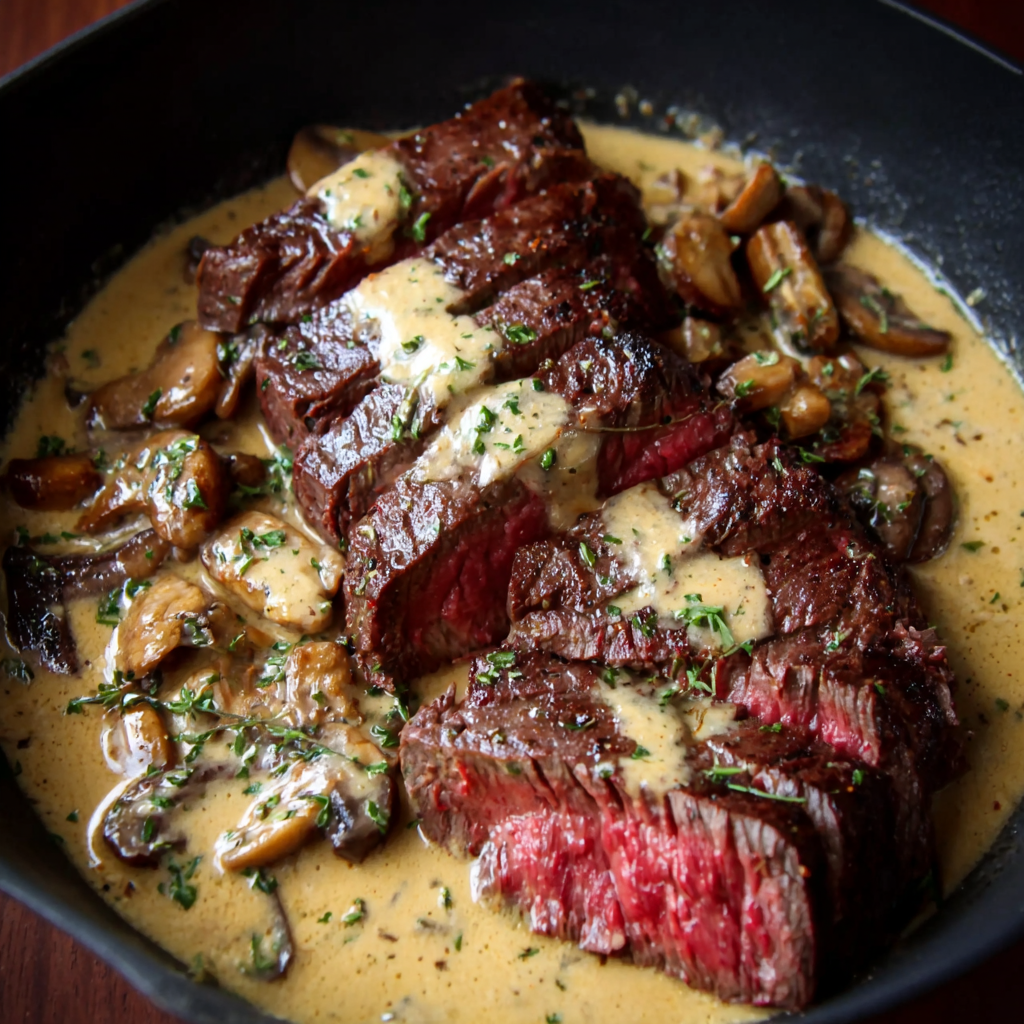
You Must Know
- High heat and dryness are key: Pat the steak dry and preheat the skillet until it almost smokes to achieve a deep, caramelized crust that locks juices in.
- Internal temperature guides doneness: Aim for 135 degrees F for medium-rare; residual heat will carry the steak a few degrees while resting.
- Sauce timing: Make the pan sauce immediately after removing the steak so you can dissolve the fond; don’t over-reduce the cream — a gentle simmer is enough.
- Storage: Leftovers keep well refrigerated for up to 3 days; reheat slices gently in a skillet with a splash of broth to avoid drying out.
- Alcohol safety: Flames may flare when adding whiskey — remove the pan from direct heat while deglazing if you prefer safer handling.
My favorite thing about this dish is how a few professional techniques — a hot pan, proper resting, and deglazing with spirit — create depth that tastes like hours of work though it takes under 30 minutes. Family and friends always comment on the sauce; one guest called it "buttery, garlicky velvet," and that always makes me smile. Small rituals, like scraping the fond and tasting for balance, transform a simple steak into a memorable meal.
Storage Tips
Store cooked steak and sauce separately in airtight containers. Refrigerate within two hours and consume within 3 days. Freeze sauce in a freezer-safe container for up to 3 months; thaw overnight in the refrigerator and reheat gently. For best reheating of steak, slice and warm briefly in a hot skillet with a tablespoon of butter or broth — avoid microwaving which overcooks and toughens the meat. Look for a faint pink center and glossy sauce when serving; a dry interior indicates overcooking.
Ingredient Substitutions
If you can’t find bavette, flank steak or skirt steak are acceptable substitutes though cook times and slicing direction depend on thickness—always slice against the grain. If you prefer no alcohol, substitute 1/4 cup apple juice or additional beef broth with 1 teaspoon Worcestershire for depth. For a lighter sauce, use half-and-half or whole milk thickened with a teaspoon of cornstarch dissolved in cold water — add it to the simmering sauce and cook until glossy. Use olive oil-based butter for a richer flavor or ghee if you want a higher smoke point.
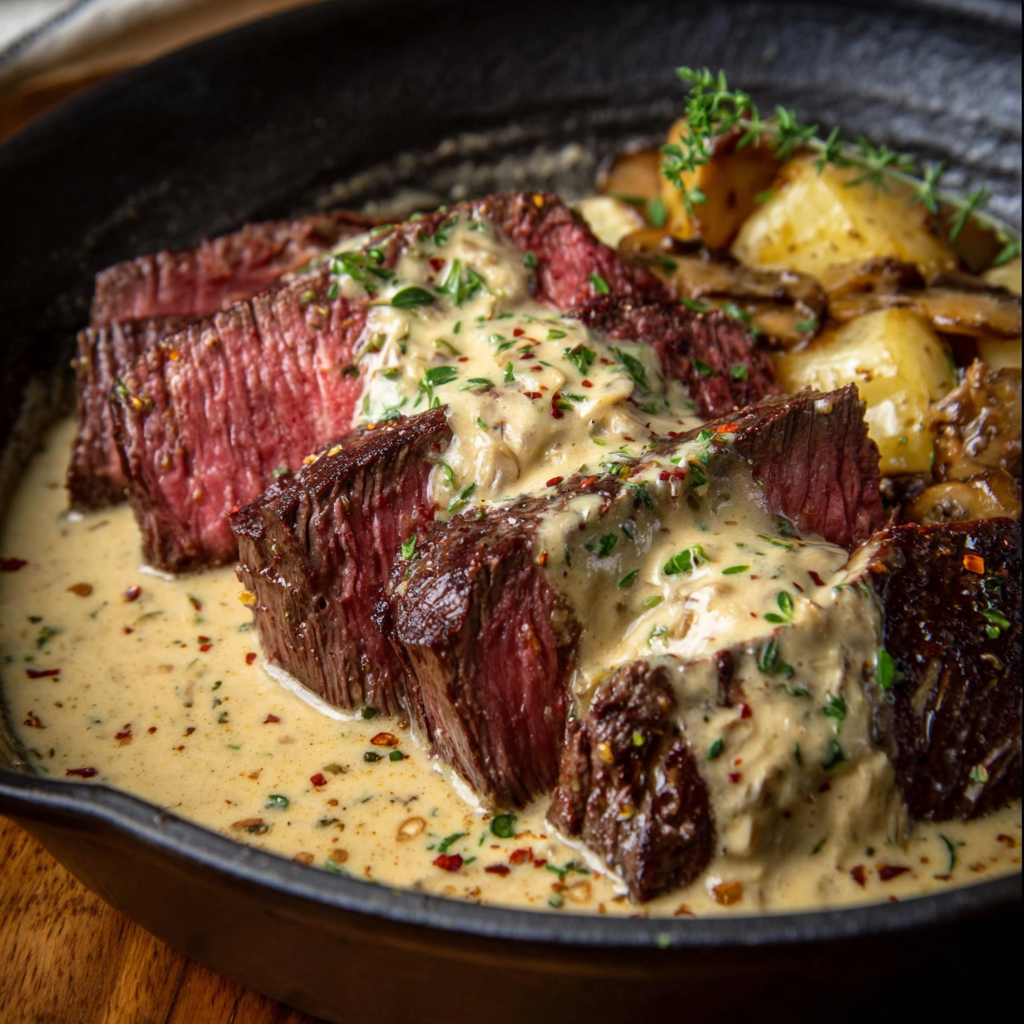
Serving Suggestions
Serve slices fanned on a warm plate with the whiskey garlic cream spooned over. Complement with buttery mashed potatoes, roasted Brussels sprouts, or a lemony arugula salad to cut the richness. Garnish with extra fresh thyme and a drizzle of high-quality olive oil. For a rustic presentation, slice on a wooden board and serve family-style, letting guests help themselves to seconds.
Cultural Background
Bavette (flap) has French origins and is prized for its beefy flavor and texture. In French cooking it’s often used in bistro-style preparations with pan sauces and simple pan-frying — a tradition that pairs well with a spirit-based deglaze. The whiskey addition nods to contemporary American pan sauces where bourbon or rye lends warmth and caramel notes, complementing the savory meat and creamy base.
Seasonal Adaptations
In colder months, pair this dish with root vegetable mash and braised greens for hearty comfort. For summer, lighten the sauce by stirring in lemon zest and using half-and-half, and serve with charred corn and a cucumber salad. For holiday menus, scale up and keep steaks warm in a low oven while finishing sauces and sides, or use a flavored compound butter instead of cream for a different festive finish.
Meal Prep Tips
For easy weeknight service, sear the bavette ahead and refrigerate cooled slices; reheat briefly in a hot skillet and finish with warmed sauce. Alternatively, make the sauce up to 24 hours ahead and reheat slowly, whisking in a splash of broth to restore silkiness. Portion into meal-prep containers with a vegetable side for convenient lunches — add sauce just before eating to keep textures bright.
Cooking steak well is a small act of care that rewards you with delicious results. Share it, savor it, and make it your own with the swaps and techniques above. Enjoy the way a simple, salted piece of meat plus a pan sauce can turn a night in into something worth remembering.
Pro Tips
Pat the meat very dry before searing to maximize crust formation.
Use an instant-read thermometer for accurate doneness rather than relying on time alone.
When adding whiskey to the hot pan, remove the skillet from direct heat if you want to avoid flare-ups.
Slice the bavette thinly against the grain to ensure tenderness.
This nourishing cast iron bavette steak with whiskey garlic cream sauce recipe is sure to be a staple in your kitchen. Enjoy every moist, high protein slice — it is perfect for breakfast or as a wholesome snack any time.
FAQs about Recipes
How long should I rest the bavette after cooking?
Rest the steak 8–10 minutes after cooking to allow juices to redistribute before slicing.
What internal temperature should I cook bavette to?
Aim for 135°F for medium-rare. Use an instant-read thermometer inserted into the thickest part.
Tags
Cast Iron Bavette Steak with Whiskey Garlic Cream Sauce
This Cast Iron Bavette Steak with Whiskey Garlic Cream Sauce recipe makes perfectly juicy, tender, and flavorful steak every time! Serve with potatoes and a side salad for an unforgettable dinner in under 30 minutes.

Ingredients
Bavette Steak
Whiskey Garlic Cream Sauce
Instructions
Bring Steak to Room Temperature
Remove the steak from the refrigerator 30 minutes prior to cooking. Pat completely dry with paper towels to remove surface moisture which prevents browning.
Preheat and Season
Preheat oven to 350°F. Season both sides of the bavette with kosher salt, ground black pepper, and garlic-herb blend evenly.
Sear in Cast Iron
Heat a 12-inch cast iron skillet over medium-high heat until nearly smoking. Add 1 tablespoon oil, then place steak in skillet and sear undisturbed 3–5 minutes per side until a deep brown crust forms.
Finish in Oven and Rest
Transfer the skillet to the 350°F oven and roast until internal temperature reaches 135°F for medium-rare (about 6–10 minutes depending on thickness). Remove steak and rest tented with foil for 8–10 minutes.
Make Whiskey Garlic Cream Sauce
Return skillet to medium-low heat, melt 2 tablespoons butter into the drippings, add crushed garlic and thyme for 1–2 minutes, deglaze with 1/4 cup whiskey while scraping up browned bits, whisk in 1 tablespoon Dijon and 1/2 cup heavy cream, simmer until slightly thickened. Thin with 1/4–1/2 cup beef broth if necessary and season with pepper.
Slice and Serve
Slice the bavette thinly against the grain and spoon the whiskey garlic cream sauce over the slices. Serve immediately with chosen accompaniments.
Last Step: Please leave a rating and comment letting us know how you liked this recipe! This helps our business to thrive and continue providing free, high-quality recipes for you.
Nutrition
Did You Make This?
Leave a comment & rating below or tag
@kitchenfunwithmy3sons on social media!

Categories:
You might also like...
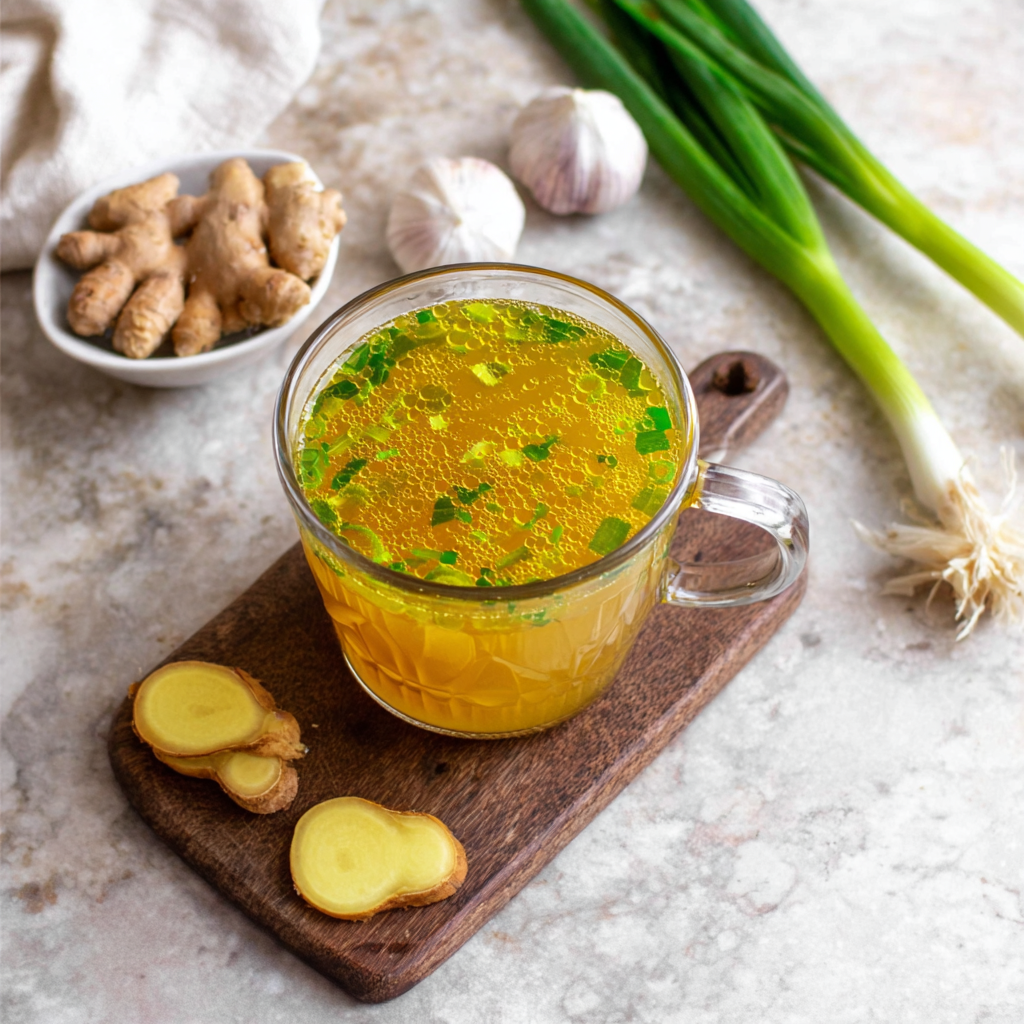
10 Minute Immune Boosting Broth
A quick, restorative broth packed with garlic, ginger, miso and turmeric—ready in 10 minutes to soothe, hydrate and support immunity.
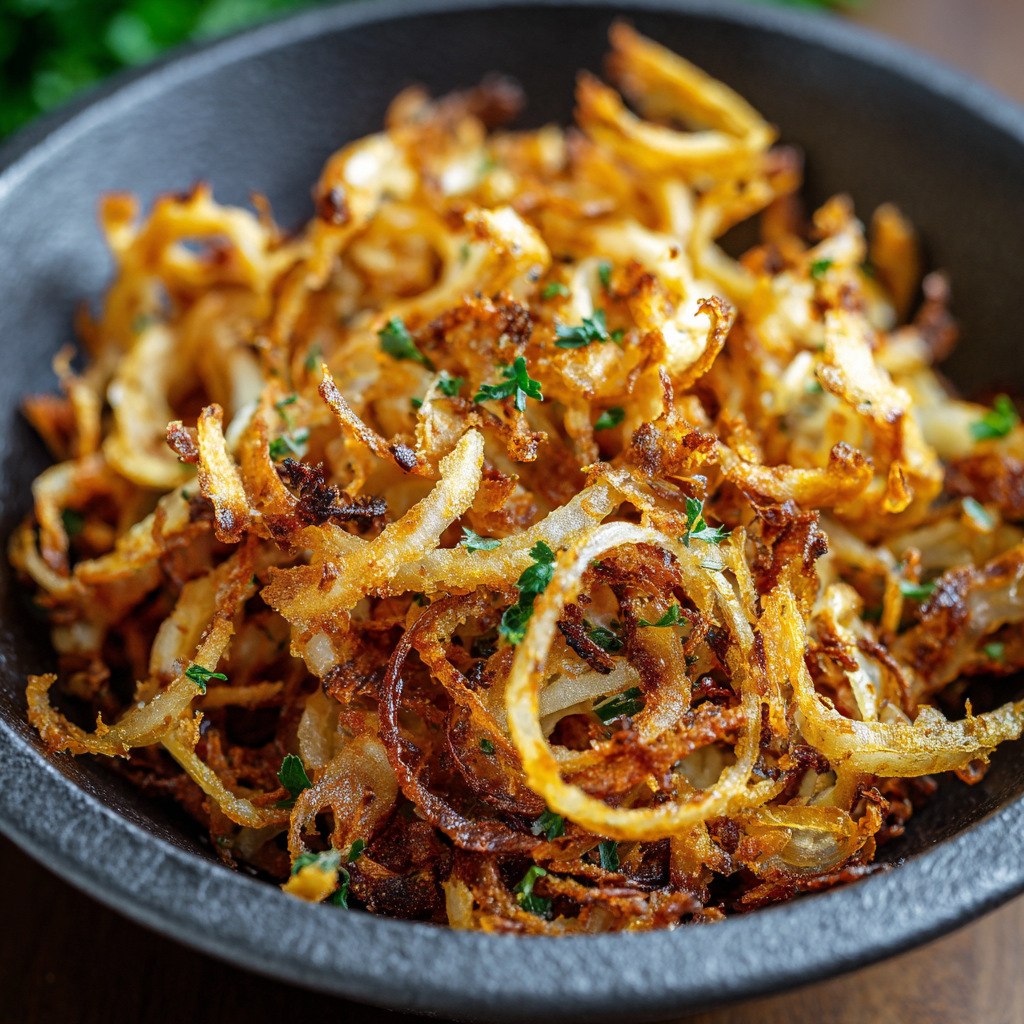
Air Fried Crispy Onion
Make irresistibly crispy caramelized onions in the air fryer using a whisper of oil—no deep frying required. A perfect crunchy condiment to top salads, biryanis, and sandwiches.
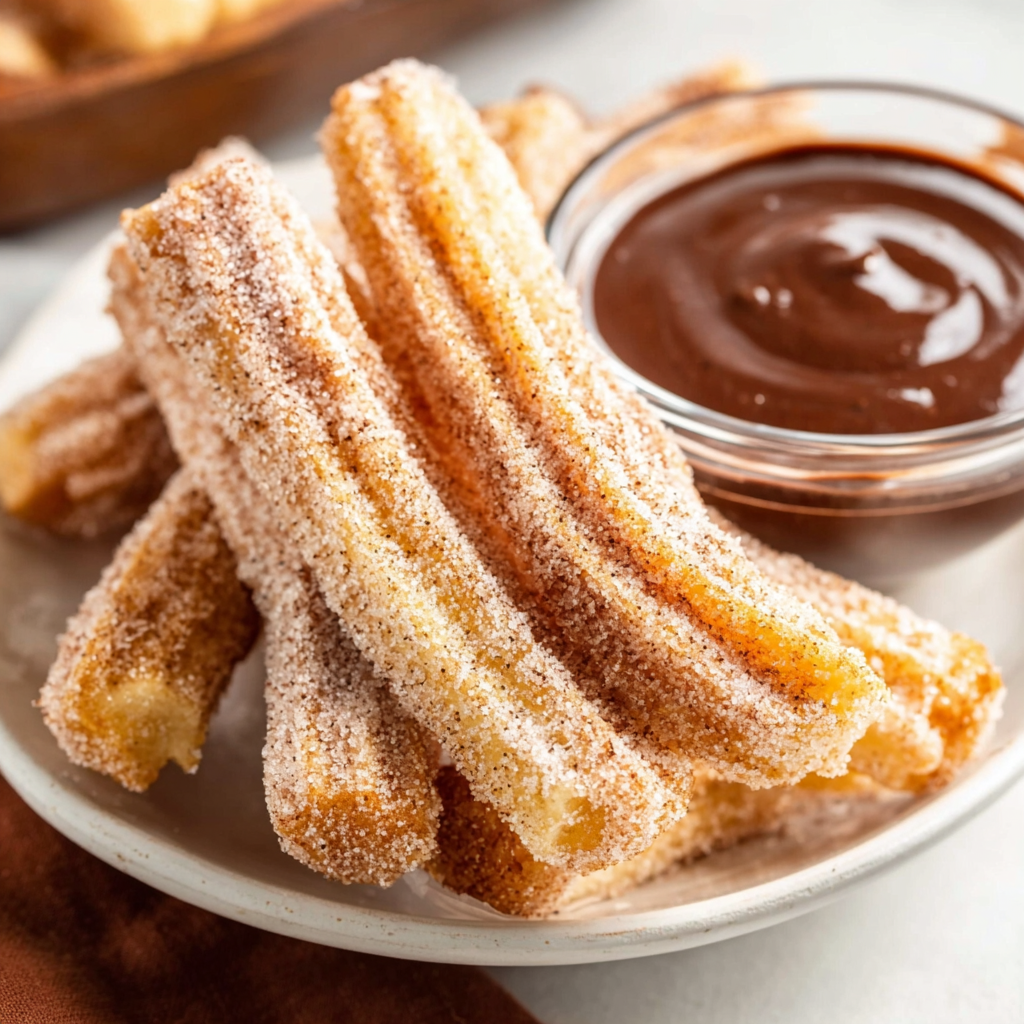
Air Fryer Churros
Golden, crisp-on-the-outside, pillowy-on-the-inside churros made in the air fryer. A lighter way to enjoy a Mexican classic, perfect for parties and weeknight treats.

Did You Make This?
Leave a comment & rating below or tag @kitchenfunwithmysons on social media!
Rate This Recipe
Share This Recipe
Enjoyed this recipe? Share it with friends and family, and don't forget to leave a review!
Comments (1)
This recipe looks amazing! Can't wait to try it.
Comments are stored locally in your browser. Server comments are displayed alongside your local comments.
Hi, I'm Melissa!
What's Popular
Get My 30-Minute Meals email series!
Quick and easy dinner ideas delivered to your inbox.

